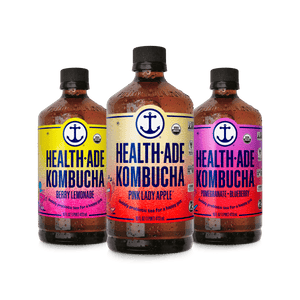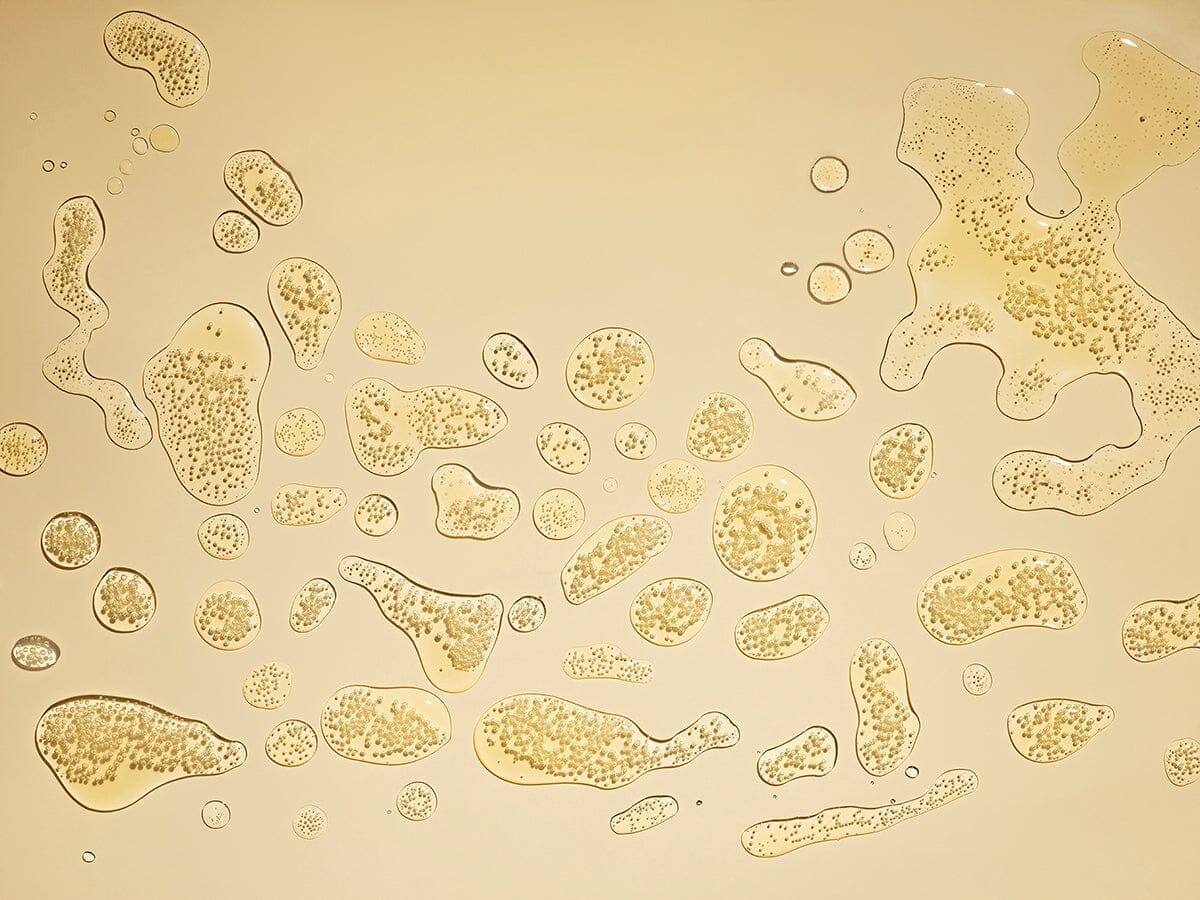
Kombucha | 12 Pack
Fan Favorite Variety Pack
One-time Purchase
49.95

Copied URL to clipboard!
If you’ve seen the videos crawling around your social media feeds lately about “worms” in kombucha, you’re not alone. Even though these videos are popping up just in time for spooky season, rest assured that you’re not going to find any of these creepy crawlers in your favorite bottle of Health-Ade Kombucha.
To understand why, let’s dig a little deeper and understand just what these “kombucha worms” really are…
Yes, you read that correctly! There have been several videos and news articles highlighting what appear to be small worms floating near the top of some types of kombucha. They have a smooth, cylindrical body, are usually transparent or white in color, and are less than 1 millimeter long.
So, what are these little creatures and are they actually worms? The short answer is: no – well, at least not the kind of worms we’re used to seeing on the ground. They are actually Turbatrix aceti, a type of roundworm commonly known as “vinegar eels.” They’re non-parasitic nematodes commonly found in raw vinegar that has been sitting around for a while.
As mentioned above, these vinegar eels are a natural part of the vinegar-making process and are most often found in raw, unpasteurized vinegar that has been sitting out for a period of time. Since any liquid containing sugar can eventually ferment and turn into vinegar when left out and exposed to air, some types of kombucha can be susceptible to these organisms.
The good news? This is unlikely and would really only happen in one of two circumstances. One: you’re brewing kombucha at home and you’ve used some type of raw vinegar in your brewing or equipment cleaning process. As your home brew sits out to ferment, the eels may surface with time. Two: you’re brewing kombucha at home and using a SCOBY (symbiotic culture of bacteria and yeasts) that came from a raw vinegar source and had the eels in it already.
These organisms are non-parasitic and don’t pose any health risks to humans, but they can ruin the appearance and flavor of kombucha. Plus, who wants creepy crawlers in their favorite beverage?! So, if you do choose to make kombucha at home and discover vinegar eels in your brew, it’s recommended to toss out the entire batch (including the SCOBY) and start over with properly sterilized equipment.
The FDA allows these organisms to exist in vinegar since they’re naturally a part of the vinegar-making process. However, if they are found in commercially produced products, they’re filtered out before finished products ever reach store shelves.
Nope! You won’t find these little guys in kombucha that has been properly brewed, stored, and on the shelf at your local store. When you grab your favorite bottle of Health-Ade this fall season, you can rest assured that there’s nothing spooky inside the bottle—just our deliciously refreshing bubbles, fun flavors, and gut-happy probiotics. Cheers!